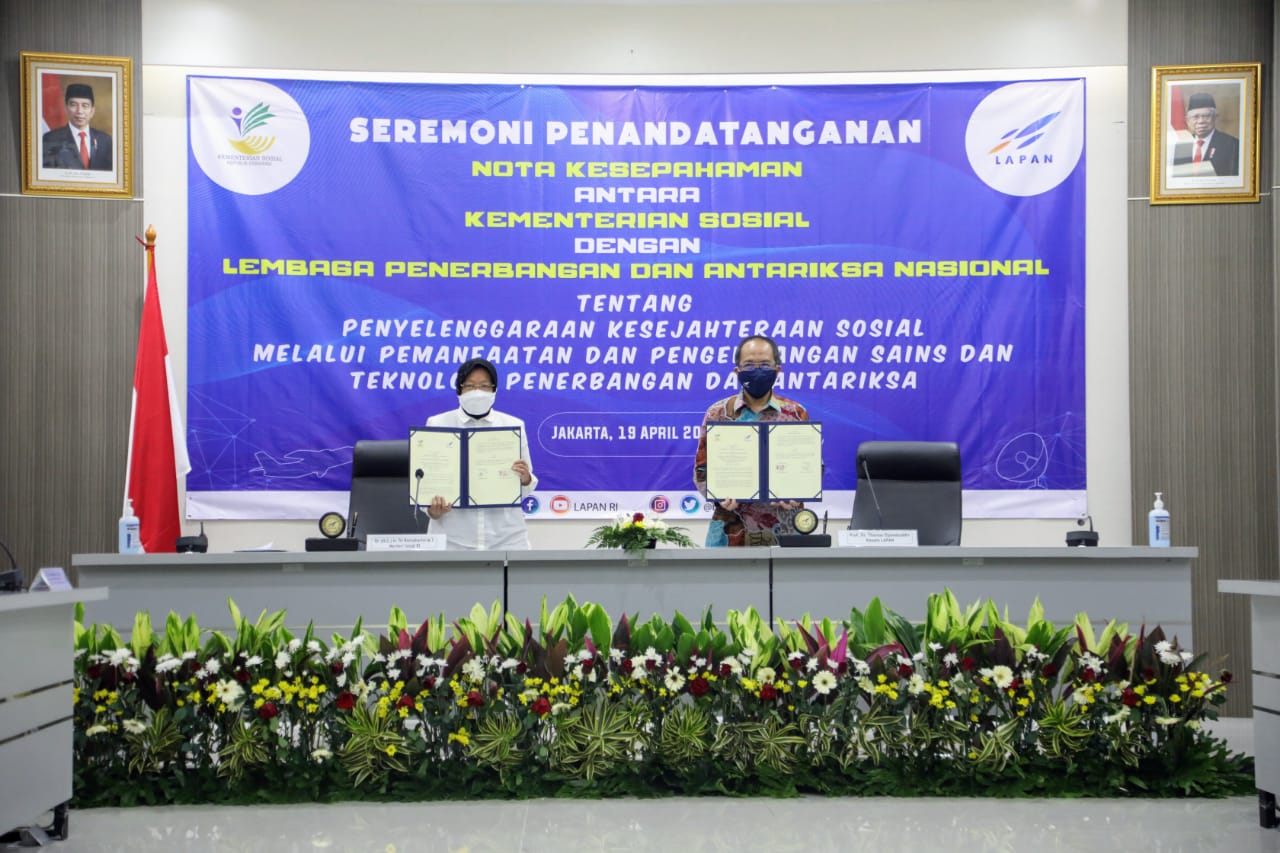Accelerating Social Welfare, Social Minister: We Need Remote Sensing Base Data

Writer :
Biro Humas
Translator :
Nia Annisa
JAKARTA (19 APRIL 2021) - The Indonesian Ministry of Social Affairs establishes a synergy with the National Aeronautics and Space Agency (LAPAN) to develop science and technology to accelerate social welfare development.
"The collaboration with LAPAN is to support remote sensing-based data provision to support policy formulation and program implementation according to one of the development principles, namely thematic, holistic, integrative and spatial," said Social Minister Tri Rismaharini at the LAPAN office, Rawamangun, East Jakarta, Monday. (19/4/2021).
The collaboration between the Ministry of Social Affairs (MOSA) and LAPAN is very strategic and should be used for the implementation of social welfare programs to be better, more effective and efficient.
Data and information, said the Social Minister, based on remote sensing from LAPAN, facilitate quick and precise decision making related to disaster mitigation, social assistance and analysis of environmental conditions.
The Ministry of Social Affairs manages Social Welfare Integrated Data (DTKS) on the population with the lowest socio-economic status. The remote sensing data can enrich DTKS to be more accurate.
"Remote sensing data helps mapping poverty areas, the environmental conditions of poor families, as well as mapping the potential that can be developed," said the Social Minister.
Remote sensing-based data can also be used in empowering Remote Indigenous Communities (KAT), namely mapping KAT locations, seeing the availability of access, as well as monitoring before and after conditions after the empowerment program.
Technically, it uses coordinate points with a distance of up to half a meter.
"Surface data can be photographed with satellite imagery up to a distance of half a meter. The acquired data can be a consideration for policy making," said the Social Minister.
The head of LAPAN, Thomas Djamaludin, stated that if the satellite imagery does not capture surface data, they will use an unmanned aircraft or drone.
"In Papua, which is cloudy, satellite imagery is difficult to capture clearly. So, we will use unmanned aircraft or drones," said Thomas.
Public Relations Bureau
Ministry of Social Affairs
Share :
 English
English
 Bahasa
Bahasa
